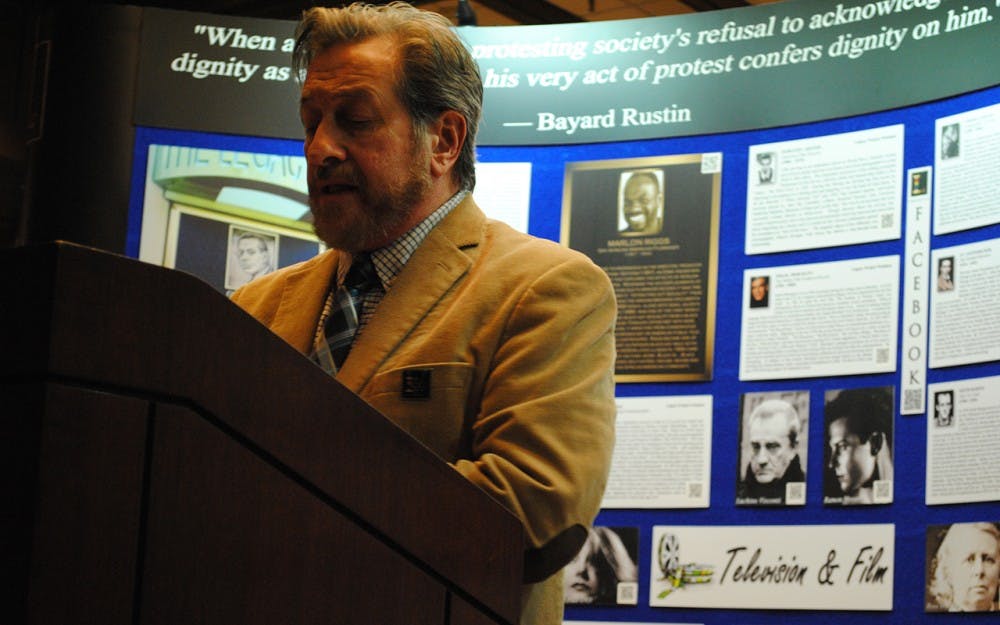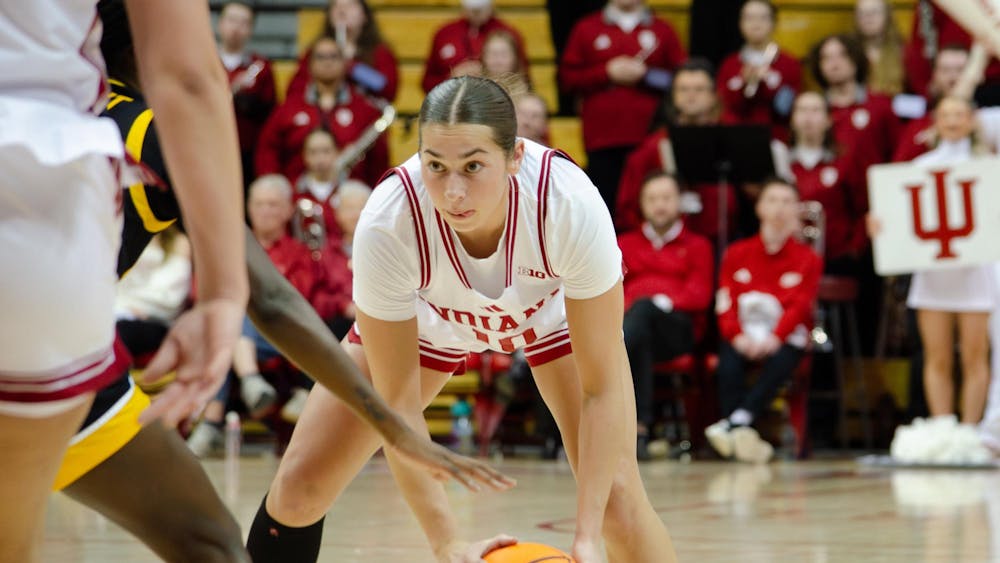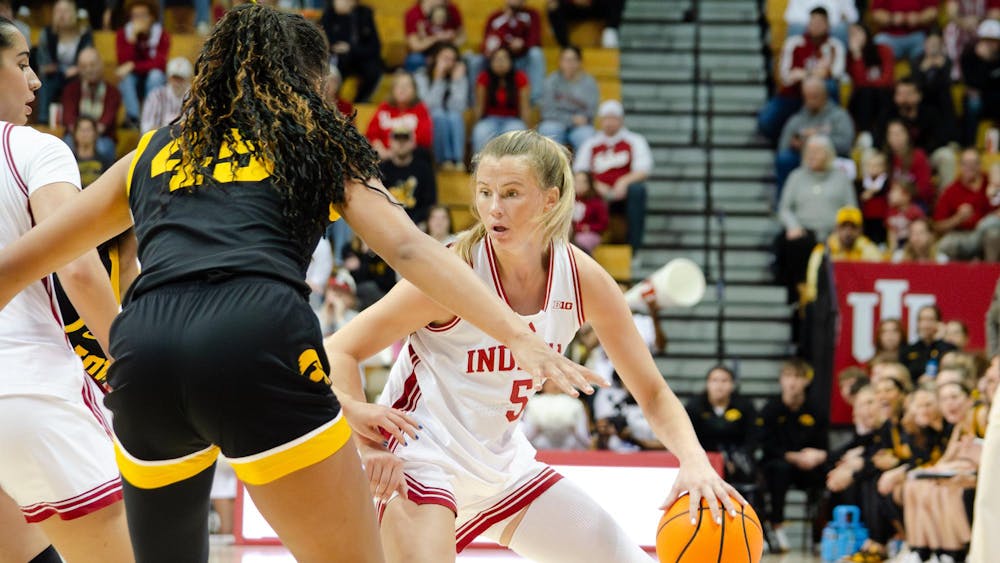Lit with spotlights in the center of the Indiana Memorial Union’s East Lounge, the curving structure of the “Legacy Wall” displays information about the LGBT community and its history on the blue fabric hook background.
The “Legacy Wall” is a traveling exhibit and part of the Legacy Project, and will remain in the IMU until Feb. 3. It was created to be an anti-bullying tool and to promote contributions in LGBT culture.
“The wall was created to take this content, basically, out of the gayborhood and bring it into communities where it could be used of some benefit,” said Victor Salvo, founder and executive director of the Legacy Project.
The wall was displayed in the IMU’s East Lounge because it is a public space that will allow students, faculty and others to view the display at any time, Salvo and others like Michael Bedwell, said.
“That’s a place where, outside of basketball games, etc., that the broadest variety of IU students and faculty cross,” said Bedwell, a historical adviser to the Legacy Project.
The traveling Legacy Wall was created as part of the Legacy Project which is based in Chicago, Illinois. The Legacy Project has four main components — a database, the Legacy Walk in Chicago, the traveling “Legacy Wall” and an education initiative.
The Legacy Walk in Chicago is a permanent outdoor museum featuring 37 bronze markers honoring those who have made contributions to the LGBT community and the world.
Some of these people include Cole Porter, Marlon Riggs, Dr. Alan Hart and Glenn Burke.
“It had always taken the form of that it needed to be outdoors. It needed to be free and openly accessible because too many kids would be scared to go to a library to ask for a book, and you couldn’t put it in a place where people had to pay to go inside to look at it because some people couldn’t afford to do that,” Salvo said.
Nearly all 37 people on the Chicago exhibit are represented on the wall in the IMU. Having it in public locations, like college campuses, allows the Legacy Project to reach out to local high schools and Gay-Straight Alliances, Salvo said.
“I think it’s really important for people to have heroes and heroines to learn about,” said Doug Bauder, director of the LGBTQ+ Culture Center.
The wall is sponsored by Union Board, the GLBT Alumni Association, Kinsey Institute and the LGBTQ+ Culture Center, a part of the Office of Diversity, Equity and Multicultural Affairs.
Bloomington is the wall’s 14th stop and the first outside Illinois. Salvo said it is the beginning of a national tour.
“I think it will surprise people to see the breadth and depth of impact that queer people have made to culture,” Bauder said.
Bedwell said a lot of the people on the wall were not publicly known for being a part of the LGBT community while they were alive. As a result, he said many people would be surprised to see the variety of those included.
The wall consists of about two thousand components and takes about a full day to set up, Salvo said. The base is a wooden platform, and almost the entire wall is covered in fabric hooks, making the pieces of information modifiable.
Salvo said it was actually designed to be altered if need be.
“The Legacy Wall bundles hundreds of our stories together into a digitally interactive travelling exhibit that takes our message out into communities to spark long-overdue conversations,” Salvo said when he gave a presentation on the wall Monday evening.
When scanned, QR codes on the wall will send learners to websites with more information and lesson plans based on the content on the wall. There are 20 different fields of contribution on the wall, and they span 4,000 years of history and represent 36 countries, Salvo said.
“The main goal of it is education and enlightenment, and I think the more people know about such things, they will benefit, as well as LGBT people themselves,” Bedwell said.






